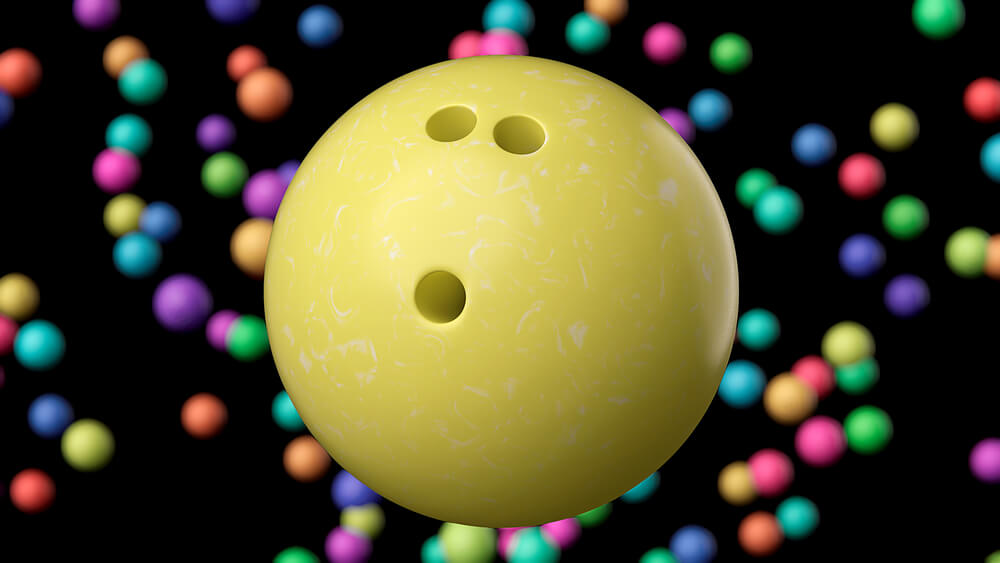Bowling is one of the most popular sports in the world, and anyone who has ever played it knows how difficult it is to get a strike or spare.
Whether you are an amateur or professional bowler, one of the things that you may want to know is – do bowling balls float?
The answer to this question is yes; bowling balls do float. However, this depends on their construction and the type of material used. If a bowling ball weighs less than 12 pounds, it will float in water.
The reason for this is the density, which is the ratio of mass to volume of a substance. The density of water is very close to 1 gram per centimeter cube (1 g/cm3). This means that an object with a density less than 1 g/cm3 will float, while an object with a density greater than 1 g/cm3 will sink.
In this article, we will talk about the density of a bowling ball and the possible factors that could cause a bowling ball to sink or float. Also, we will discuss eight interesting things to know about bowling balls and floating.
Do Bowling Balls Float?
If you have ever wondered whether bowling balls float or sink, the answer is both. It depends on the density of the ball. A bowling ball can float in water depending on the density of the liquid and the ball itself. Bowling balls are very dense and heavy, but they can still float in water. How?
The density equation tells us that density = mass/volume. So, if we want to find out if a bowling ball floats or sinks, we need to measure both its mass and its volume. If the mass of a bowling ball is greater than its volume, then it will sink; if the volume is greater than its mass, then it will float.
Now, you might be wondering if the bowling balls float, then why do we not see them floating all the time in the pool. Well, it is because of their weight. The heavier bowling balls can sink to the bottom and sit there unless someone comes along and picks them up.
The lighter ones, however, can float on the surface of the water and stay there. Some might even float around as they move with the current of the water or the kinetic energy they were thrown into the pool with.
If you are looking to make a bowling ball float, then you need something heavier than water but less dense. That way, it can float on top of it.
Factors Influencing the Behavior of a Bowling Ball in Water
A bowling ball is a dense, spherical, solid object. It is made from urethane or plastic and other materials. These materials are not water-soluble which means the ball will not dissolve in water. However, it can sink or float depending on its density and weight.
1. Density
Water has a density of about 1 g/cm^3 (1 gram per cubic centimeter). This is what makes it possible for humans to float in water, such as a pool or the ocean. If you have an object that has a density lower than one, it will float and if it has a higher density than 1, it will sink to the bottom.
For something to float in water, it must be less dense than one gram per cubic centimeter (1 g/cm^3). This means that the object’s weight divided by its volume must be less than 1.
2. Weight
Weight is the most important factor in determining whether a bowling ball will float or sink in water. A bowling ball’s weight determines its buoyancy.
Naturally, the heavier the ball, the more likely it is to sink. The opposite is true if the bowling ball is light. A bowling ball that weighs less than 12 pounds will float. If the weight is greater than 12 pounds, then it will sink.
8 Interesting Facts to Know about Bowling Ball and Floating
Our world is full of interesting things that we may have never thought about. One of those things is whether or not a bowling ball will float or sink in water.
Here are some interesting facts about bowling balls and their floating phenomenon:
- Bowling balls are round and mostly hollow. This allows them to displace the same amount of water that they weigh. That way, they don’t sink into the water. The more air inside the ball, the easier it is to displace enough water to keep it afloat.
- The density of a bowling ball is less than that of water, which means that its mass is smaller than that of an equal volume of water at room temperature. Since it’s less dense than the surrounding fluid, it’s lighter and doesn’t sink easily.
- Bowling balls are made from polyester resin or urethane with a hard outer shell (usually plastic). These materials have low densities so they can float in water.
- If you put a bowling ball into any freshwater source, it will float! If we consider the 8-pound bowling ball, submerging it in freshwater will cause it to float simply because the ball has less density than the water. Regardless of how hard you push the bowling ball into the water, it will always return to the surface and float.
- Another consideration is the weight of a 12-pound bowling ball; this will cause it to sink quickly in freshwater. It doesn’t matter how gently you place the bowling ball; its density is greater than that of fresh water, so it will sink to the bottom regardless.
- If you’re ever wondering why bowling balls float, it’s because their hollow, air-filled center creates an air pocket that keeps them buoyant when submerged in liquid. The reason bowling balls have holes in them is to make them more buoyant when they are dropped into a pool or other body of water.
- According to Newton’s Archimedes principle of buoyancy, an object will rise, or fall based on how much mass it displaces. In simple terms, if you have two objects with similar weights but different volumes (think of a bowling ball and a ping pong ball), the object with less volume will have more density and sink faster than the other object that has less density and floats quicker because it displaces more fluid.
- When an 8-pound bowling ball is placed in seawater, the ball will float to the top of a saltwater surface. On the other hand, the 12-pound bowling ball may float or remain submerged in seawater depending on the concentration of saltwater. Even if the water isn’t too salty, it may be able to stay submerged.
Takeaway
To summarize, bowling balls do indeed float. A bowling ball floats because it is less dense than water. A bowling ball will sink due to the high weight of the ball itself.
The fact that a bowling ball will float in water is that some of them are not very dense at all. Many objects have higher specific gravity than most bowling balls, and these heavier items sink in water and bowling balls float.





